The Cadillac XT6-Gate debate continues around the world now across car boardrooms and assembly lines, and media outlets, and online, as GM’s and Cadillac’s incompetences these recent days sent shudders through the car industry and Wall Street after critics and investors threw their hands up in disgust and in exasperation after GM’s and Cadillac’s poorly timed and/or executed announcements, judgements, and recent decisions about autonomization and electrification of their iconic storied, but of recent times lately, troubled luxury brand. So much so we all did some soul searching to wonder if a luxury car brand is even needed anymore? At least half aren’t doing well and in an age of driverless taxis and car sharing are they even needed anymore at all? This is not a good sign for Cadillac if it’s coming to this. I address these issues:
The Talking Points:
- Cadillac and GM continue to seek cover from the fallout of “Cadillac XT-6 Gate,” named for the recent roll-out debacle of Cadillac’s latest CUV.
- This perhaps is the worse public relations crisis GM has experienced since the ignition switch recall scandal of 2010.
- The scandal before that was when the big three car CEOs, Rick Wagoner of GM one of them, went to Congress in 2008 asking for bailouts, without the optics of arriving at Reagan National in separate private corporate jets.
- The Cadillac XT6 is a big “3 rower” CUV that’s the widest largest fattest biggest gas piggiest vehicle that Cadillac has stuffed into their portfolio since they hastily added the other iconic gas piggy Cadillac Escalade in 1998.
- I’d say it’s just about as big as Escalade. But the problem isn’t the size, it’s the power plant.
- The other problem is Cadillac has proclaimed itself in one way and others as being an “electric car” or “all electric car” brand or company.
- GM recently made an announcement codifying this, stating GM will be “the lead brand” to take on Tesla.
- GM has been taking steps moving in that direction to be fair, with things like switching supply chains to all electric manufacturing, consolidating production operations by closing nearly a half dozen US plants, and laying off nearly 15,000 workers.
- One of the controversial aspects was cancelling gas and hybrids that now cost way too much to build.
- But then over the last 24 months, while GM and Cadillac were canceling a slew of cars including gas saving hybrids, Cadillac was stuffing, at times inconspicuously, two gas CUVs into their portfolio.
- They stuffed the third, XT6, so conspicuously and obviously, that if you weren’t paying attention you’d ironically actually almost miss it.
- The third stuffing was done within hours of the GM “lead brand” announcement.
- There are the three things that sent this into PR crisis mode:
- -Cadillac calls itself “all electric” with no BEV in its portfolio, year 11 of the Electric Car Revolution.
- -Cadillac says it won’t have a BEV electric car in show rooms until 2022, a ridiculously long procrastinating three years from now. GM now has three BEV platforms to use. No car. BEV cars are much easier than gas cars to make, and as easy for them to make as refrigerators, that ironically GM once manufactured (Frigidaire).
- -Cadillac didn’t even have the forethought or optics to put Super Cruise into XT6 after GM spent billions purchasing Cruise Automation, the autonomy think-tank turned driverless powerhouse startup GM recently bought to put it in front of the autonomy industry line.
- Now GM is spiraling into PR hell, or pre-preproduction hell, depending how you look at it.
- Investors and critics are angry and exasperated. They’ve had it. Me too.
- The national conversation has now become a world conversation about Cadillac.
- Car CEOs like Andrew Palmer of Aston Martin, one of the very few of the independent luxury performance car companies left on Earth, and the only independently owned British car company owned by primarily British nationals, are weighing in.
- Should there even be car luxury brands with all this car taxi like high tech in and out stuff going on?
- As long as the two largest markets want them, China and North America, yeah.
- Let’s be clear: the problem here is the Americans, not anyone else. They treat their car luxury brands like sh*t.
Recent controversies at Cadillac has sent shudders through the car industry as critics and investors throw up hands in exasperation over their recent decisions after avowing to be an “all electric” car company to be the “lead brand” of GM to take on Tesla. But adding three gas cars back into their portfolio, the third the very same day of the Tesla announcement, and the one of which does not feature any of the technology GM spent billions on to acquire Cruise’s autonomy signature features. This has questioned GM competency in handling their future electric and autonomy plans and questioned Cadillac’s prognosis, even a probability of extinction as a result. It has also started a national conversation that now with Aston Martin’s CEO, , extends around the world.
The Pinnacles v. the Sales Volume Luxuries: The Six Brands of Ultra Luxury and Cadillac’s Quest to Join
XT6-Gate has got us all thinking, CEO Andrew Palmer of Aston Martin too, as to whether luxury brands in big auto houses will survive. It got me wondering in an age of car sharing and driverless taxis of eventually if we will even still need them. I was confused at first at what Mr. Palmer meant by luxury brands surviving in big houses so let me elaborate for him as I now agree.
I get what Palmer was trying to convey. In the status quo of the world car industry there are six superduper luxury brands, the Pinnacles I’ll call them: Aston Martin, Ferrari, Lamborghini, Bentley, McLaren, and Rolls Royce. These do not depend nor rely on sale volume to sustain themselves. Individual sales are individual sales. The rest to name a few: BMW, Mercedes, Cadillac, Infiniti, Acura, Lexus, etc. are the next tier of luxury, they’re mass volume luxury: they depend on sales volume and as long as they do that, their chances of survival into the 21st Century gets a little more complicated if not more remote, that it doesn’t look good.
Since they depend on sales volume I think one of the reasons why their chances of survival are decreasing is because of car sharing, robotaxis, autonomy, etc. Where car ownership will become more of option as opposed to more of a necessity as it is now, and as more people are given more options as to how they want to either possess or even drive a car, it’ll become much harder for car makers in this tier to find ways to stay profitable. And if you look at this paragraph carefully you’ll plainly see that Lincoln and Cadillac are really doomed from the get-go. I think this one if the reasons why GM sees this, and why they want to try to push the brand upmarket so they they’ll have options in the future as to how they’ll want to market their cars instead of starting all over again with another luxury brand either purchased elsewhere or from scratch.
So to answer the title question, as long as there is a China and US market there will always be a need for luxury brands, but that definition will change as we go along into the future, and I’m afraid you’re going to have to have a bit more money to satisfy your taste of luxury because with the exception of less than a handful of sale volume tier brands left, the only luxury option that’ll be left are the Pinnacles.
How did this happen? How did we get here with the Six Pinnacles and with Lincoln and Cadillac who were for decades on top of their game to now rate them as probable for extinction? Oh it’s simple: the Americans got greedy and they got cheap. Let’s go back in time for me to tell you all some interesting car history:
The American Mishandling:
There was a time when Europe just didn’t know how to do luxury at all, even before the Americans started their input. Go back to vintage years of existing or extinct European brands to see that through the Renaissance Era of the gas car of the 1950’s, many brands didn’t have full power assist and accessories. For those who don’t know what I mean, they didn’t have any or fewer of the following: air conditioning (in lots of cases, particularly the Italians and Germans, a/c that even worked), power steering, power brakes, automatic transmission, power windows, power seats, power mirrors, power antenna, tilt and/or side moving and/or telescopic steering wheel, power retractable top (convertibles), power retractable lift gate (wagons), cruise control, automatic twilight sentinel/headlight switch control, and electric trunk/boot lid release and/or pull down to hydraulically or electrically close. The big American three invented most of these features and started putting these features in their cars back in the early 1950s before anyone else around the world. It was so subpar for the Europeans that when Rolls Royce introduced the Silver Cloud in 1955, it had almost none of the above features in its car. You could get your choice of hides and veneers, but a V8, automatic transmission, power windows, even air conditioning wasn’t offered by Rolls Royce that year. My have times changed.
With Chrysler, Lincoln, and Cadillac competing against each other, they also competed against the European brands, starting in the 1950s through the 1960s. And in doing that, they made themselves compete with Rolls Royce making them the better buy. Movie stars during this era didn’t want Rolls, why should they? For just a few grand less they could get air and full power and better build quality. And they got it sooner than they would a Euro job like Rolls. So much so that the competition got really intense as each would at times have sub-brands that competed. Continental for a few years became its own Lincoln sub-brand before merging back into a sole car in the portfolio, the same as well for the iconic Chrysler Imperial as a car then brand then car for Chrysler, Fleetwood and Eldorado as well for Cadillac. These sub-brands aforementioned here were the top of the line and the cream of the crop that in their competition with their American counterparts, they also competed against Rolls Royce. In some cases like the Imperial Crown and the Eldorado Seville, the parts were made in the states or the car partially assembled here, then sent to Europe, most particularly to Italy, where the Italians may not have necessarily known then how to power assist and accessorize a car well, but they certainly knew how to coach interiors, and I’d say the Imperial Crown Ghia is perhaps the most beautiful luxurious American car ever made after 1960. PERIOD, even before the 1961-69 Continental (my favorite, made by the same designer BTW). If you see the picture above you’ll know why. The Eldorado Seville of the late 1950s was another beautiful example of one of the finest Cadillacs ever made.
Where, Why, and How the Americans Failed at Luxury
But one of the biggest problems the American manufacturers have and I can say this because I’m American, is that they eventually became greedy and they are cheap when it comes to making their cars, it’s part of the culture unfortunately to see how much money they can make off of anything, even if it requires selling a soul. This is one of the reasons Cadillac has struggled for years to recover from its heresy as a luxury discount brand, is because it still cannot resist the overwhelming temptation from its GM roots to put cheap plasticky interiors inside even its Cadillac cars, even to this day. And they scratch their heads over at GM why people have no problem leasing, subscribing, even renting them, but a long haul of ownership commitment beside the quality control issues they have with GM products, makes things like long term ownership a bit too much for smart customers.
It started as the travel business took off during the Jet Age of the 1960’s, the car rental business went with it, and it wasn’t enough to send Fords and Chevys to Hertz or National airport rental desks, they eventually started over producing and then sending Lincolns and Cadillacs as well, cheapening their brands to become known as “luxury discounts.” There’s lots of money to be made in fleets sales. But you don’t put your best cars in those parking lots, you just don’t do that, common sense says that! They’ve never recovered since.
Tell me, when was the last time you were able or even saw or heard of a Bentley Brooklands or Azure or even the mass market models like Mulsanne Turbo or Turbo R back in the day or a Continental Flying Spur or Rolls Ghost or Wraith or Silver Spur or Seraph at a Budget or Hertz or National airport counter? Let’s not make this about Rolls or Bentley, how about a Mercedes S500, S600? Even an old SD330, or S430? A Jaguar SJ Vanden Plas Double Six? There was a time people would balk about that with Cadillac at the airport, so unheard of, same as a Cadillac station wagon! Huh? Since then Cadillac and Lincoln have become luxury whore brands. They need to stop that. They won’t. Too much money to lose. So with that, both brands have these come from behind plans to greatness, but if they’re not going to change the above things about themselves with the sales volume issues, they’re never going to get where they think they’d like to go. You either have it one way or the other; you can’t have the best of both worlds. They have to choose. They won’t, so their default makes them decide. They will always be second string discount luxury whores.
How the Germans are Different
You can tell the Germans learned from the Americans’ mistakes with their Bentley and Rolls acquisitions from VW and BMW, respectively. Except for the Bentley Spur which at times got so backordered VW really had to step in and extend production on a VW branded assembly line for the Phaeton, which the car is based upon anyway, which was a good thing in many ways, both German makers otherwise leave their luxos alone, and each assembles them on exclusively dedicated luxo branded assembly lines, something the Americans don’t do in order to save money. So instead of a dedicated Lincoln plant or a dedicated Cadillac plant where only those brands are made, the GM Arlington Texas plant makes GMC Yukons, Cadillac Escalades, and Chevy Tahoes all on the same assembly line switching grilles and badges, and I don’t think an Arlington worker gives a sh*t which is a GMC or Caddy, and why should they? They’re rightfully more concerned probably, about when or whether they’re going to get laid off by GM. This process does not promote brand identity or pride. This is why the Americans will never get it. There will never be an equivalent Bentley assembly plant in the USA for an American brand like there is in Cheshire Crewe, UK. Some of you know exactly what I’m talking about when I just mention the plant name and not why as I don’t have to. It doesn’t need explaining. Okay, one word. Tradition. Here two: Excellence.
At the Sindelfingen Germany plant, Mercedes Benz makes its E Class saloon. Unlike their SUVs where the profit margin is large, Mercedes Benz makes very little money on the S Class, believe it or not, and so it must be judicious as to how it builds and sells the car, especially in the states where it makes the least amount of money than anywhere else in the world. The same base model car that sells in Asia for over $200,000+ USD can be as cheap as $85,000 in the states. MB has to cut the price as other makers do with their competing big car models so that they stay competitive. So MB makes the S Class only on a limited production schedule. When you order one you’re really making an appointment for the plant to pull E Class workers to assemble an S Class, and it is considered a very honorable and highly desired and sought after assignment to do so. Ask a Lincoln Continental or Cadillac CT6 worker if they feel the same.
So VW and BMW sit down with their luxo engineers and design a frame (or platform) sometimes off an existing Group frame, like at one time with Phantom 7 off BMW 7 Series, in the case of Phantom 8 and Mulsanne, exclusive frames made for them. And if they use a common frame they really go out of their way to make sure the frame looks nothing in-house under the group. It’s hard to believe but a Panamera really looks nothing like a Spur or A8. With their special frames and the materials they need, the big sisters have their little ones go off on their own and they leave them alone. The Americans so do not do this.
You can tell Ford was starting to get it, at first, when they designed Continental by giving Lincoln its sole dedicated platform. This isn’t a Taurus retread, and that’s been their problem over the decades, they use the same frame and don’t even have the shame to try to hide the same cars that are using them in the same model years. The same over at GM, with Cadillac CT6, the first dedicated big gigantic V8 Cadillac in a generation or two, OMG rear wheel drive too! The same A body frame of 1936 Harley Earl was using came to an end at the same Arlington TX plant, when the 1996 Cadillac Fleetwood was the last car to use it, last century! Beforehand it was all about rebadging as Bill Mitchell did his best to hold the line right through the 1980s until he retired but after that it was even a worse lost cause. I can only imagine what that man went through. But this has been a problem with the Americans over the years that they just don’t see, to not get it.
The Differences with Big Houses
The Euros take care of their luxury brands in their big houses, the Americans do not. This is why I understand Mr. Palmer’s comments, and I think he really had his eye on Cadillac when making a prognosis about the survivability of luxury brands in these big houses. It ain’t looking good for Caddy and XT6-Gate doesn’t help!
Photos courtesy Chrysler Corporation legacy, all car logos and trademarks displayed are from the Internet and represent those brands that own them, published here and all under Section 107 of the Copyright Act 1976, allowance is made for "fair use" for purposes such as criticism, comment, and news reporting.
I am so grateful that my publisher allows me the generous privilege within reason to express my opinions about matters related to the auto industry. I try to be judicious and respectful about the content. I ask you do the same in the comments section. And please keep in mind that the opinions expressed here are solely mine, and not those of Hareyan Publishing or its employees, including my staff colleagues.
Al Castro is a security expert and a retired LEO who is a staff and opinion piece writer on electric and autonomous vehicles for Torque News.
What do you think of Al’s Cadillac XT6-gate take on luxury brands? Please let us know below!



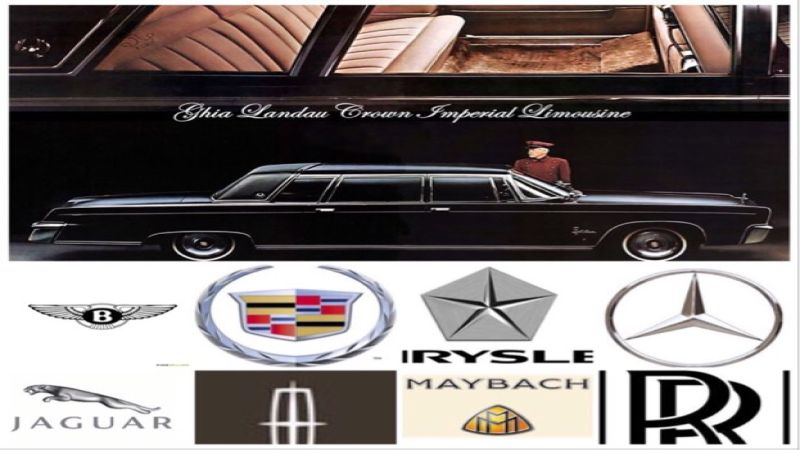




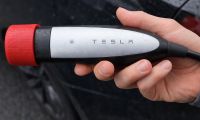

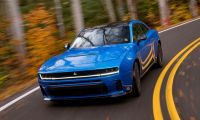
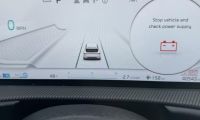
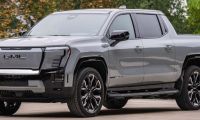
Comments
Take a valium please and stop
Permalink
Shorten your articles as nobody has time to read novels. Thank you!
yes same blah blah, I'm sure
Permalink
In reply to Take a valium please and stop by Bill Piekos (not verified)
yes same blah blah, I'm sure the car makers are so dumb they listen to this eletric vehicle bs mantra lol
Oh yeah like they’ll listen
Permalink
In reply to yes same blah blah, I'm sure by ulf eriksson (not verified)
Oh yeah like they’ll listen to you. When I write something they’re not happy about, oh they let me know, starting with an email . . . It’s lettjng me know that starts something in them.
At 1.1% of total sales EVs
Permalink
At 1.1% of total sales EVs are not a revolution but an experiment regarding new propulsion ideas and at this stage not even a trend even though it is heavily subsidized by tax payer money and hence not a bone fide profitable business. Tesla has been in business for 11 years and still cant make a reliable profit!
The writer needs to look at real numbers before making ridiculous claims and spreading misinformation.
You need to catch up on the
Permalink
In reply to At 1.1% of total sales EVs by BILL (not verified)
You need to catch up on the news or stop phone scrolling to actually read the articles. The two largest car companies in the world have switched supply chains to all electric. This is why nearly 15,000 people lost their jobs this past Christmas. Tell them that this is an experiment to see what they have to say.
Interesting article Al. I am
Permalink
Interesting article Al. I am not sure anyone else is seeing Cadillac's latest product announcement as being a crisis/"-gate" issue. I believe that you were so worked up about believing your own accelerated BEV timeframe that you listened to GM's marketing department and saw it as a broken promise. Sure GM is making their fair share of mistakes and timing blunders, but unfortunately they have a history of making short-sighted decisions aimed at making short term profits. It was a bad move to kill off the Volt and Cruise without replacing them with similarly economical models. Or at least making actual product announcements of real cars that are going to replace the ones that they are killing off. I think that the CT6 was all part of GM's long range plan for their product line moving towards CUVs and SUVs to make more profit in the short term. But once Tesla starting selling tons of Model 3s, and Rivian announced BEV pickups and SUVs, both eating into GM's most profitable products, they got nervous and released a big marketing statement that Cadillac is going to Lead GM's move towards an EV future. Unfortunately, GM has a long history of thinking that their marketing department is more important than their engineering department, and that bold promises make sales, as opposed to having their superior products released first, and then have the press judge them as a success. The problem is that in Detroit 3 years is considered a fast product development cycle, so I think that the problem with the CT6 was Cadillac's decisions that they made 5 years ago that didn't plan well for today's carbuyer's needs, and their dramatic (verbal) response to recent EV sales and advancements, without real BEV products to back up their claims to offer EV vehicles that rival Tesla. If I were running Cadillac I would put together small engineering teams to create cool Cadillac BEV prototypes based on the Chevy Bolt drivetrain, Showing off PHEV and BEV versions of the CTS-V and ATS-V, and Escalade, and yes, the CT-6. And then tour those touchstone cars around the autoshow circuit and on the internet to show that Cadillac was truly responsive and innovative now.
Thank you for the comments.
Permalink
In reply to Interesting article Al. I am by DeanMcManis (not verified)
Thank you for the comments. This has nothing to do with me, I'm not eager about anything as opposed to people holding onto outdated technology that the car industry now is eager to get rid of. I have no agenda: just keep it about zero emissions because that’s what this is about, and say what you mean, mean what you say, that’s all. Two years ago GM went out of its way to have an autonomous level 5 vehicle ready by last year to apply to the USDOT for production, laden with Cruise Automation technology. If GM were that eager to make electric cars, they would have done the same. They didn’t. They now have 3 frames or platforms to make these BEVs. If they were eager as Tesla they’d have a car by now. After all Dean, cmon, it has been only 11 years! What are they waiting for? VW’s are in year two approaching year three of production!
Check the feed please. If
Permalink
In reply to Interesting article Al. I am by DeanMcManis (not verified)
Check the feed please. If Andrew Palmer is making a comment this isn’t a PR crisis contrived. He actually slammed Cadillac thinking it’s a done brand. How can you call something all electric but have no car? BTW Mr. Palmer took a gas car frame and made a BEV that’s about ready for production! This is from a tiny independent British car company owned and now operated mostly by British nationals unlike all the other British brands. They have a BEV. Not Cadillac. So where is this about me? ;)
You have no agenda?...Really?
Permalink
You have no agenda?...Really?...Sorry, but your actions and writing says exactly the opposite. You are easily one of the most vocal evangelists for BEVs that I have seen on the internet. That is meant as a compliment because I do admire your tenacity, but you are rarely impartial. Regarding Cadillac's technological push for cruise automation, I an not surprised. But on the other side, their Super Cruise feature is limited, so that they don't face the criticism of Tesla, who fully embraced autonomous driving options for all of their cars. The fact that Cadillac was slow to come out with a BEV up until now has more to do with short term profit and market economics. Should they have been engineering a BEV 3 years ago so it could have been released today? Sure. Should they have shown a working concept BEV when they made their announcement? Sure. But it is hardly a crime, especially considering that most of their competition are either producing zero BEVs or maybe one low volume model. Palmer is slamming many of Aston Martin's competitors, but it is not like they are any threat to Tesla either. They were planning on building a BEV Rapide, but that died when Chinese partners backed out. Now that AM got fresh funding from selling stocks perhaps they can do more than build a tiny handful of $250,000+ exotic cars. AM is clearly NOT in competition with Cadillac or even Tesla, so the criticism is weak. There are many large automakers who have been on the fence regarding BEVs for many years now. The larger car market is still 97% fossil fuel based, so even with Tesla's success, and other automakers like VW making bold commitments, but many automakers are just now jumping on the bandwagon, with some (like Chrysler) not really moving yet. So the move towards more BEVs will be slow overall, and it is to be expected that the engineering departments are having to quickly catch up to the big promises that the marketing departments are saying about their new direction and commitment towards BEVs. Plus I always smile when you mention that I am clinging to "old" technologies, when you try to put down PHEVs. You seem to forget that PHEVs are just plug in versions of hybrid cars, and even though a few automakers are jumping straight to BEVs, I will bet you that we see more sales in hybrids and PHEVs than BEVs over the next 5 years. You conveniently forget about the fact that almost all cars sold today have no electric traction motor, and that the logical evolutionary step will be to convert current models to hybrids first.
Dear Al, to your earlier post
Permalink
Dear Al, to your earlier post:
GM cutting 15,000 jobs has zero to do with EV market, but rather production inefficiencies, which have been present for years. But this aside, how do you explain Tesla cutting a whopping 7% of their workforce? Imagine that: a world leader in EVs cutting jobs! But, Ford is shuttering many plants as well, so is Tata etc. In short, the biggest market in the world took a big hit for the first time ever, competition is growing and everybody is adjusting. As they should. Including Tesla. Bravo! And i suspect some may worry a recession is coming soon. We are overdue...
As far as Cadillac's forward looking statements: that's all they are - forward looking statements. Renault issued even bigger EV promises about a decade ago, go beat them up! If large vehicles which North American market loves give you an allergic reaction, please beat up Ford as they have been an absolute leader in this sector for many decades (F150). So go after the big fish and leave Cadillac alone, as they are a small niche player and no matter what they do, they will not save the planet. Neither will Tesla for that matter.
The reality is, current EV market (which statistically also includes hybrids btw) accounts for a measly 1.1% of North American sales (per 2018). If you separate California from the stats this number goes down to about 0.5%. You call this revolution? What would you call the remaining 99.5% then? In real terms an EV market is a luxury novelty item - not a revolution. If you still disagree, i have a deal for ya: I will swap your $990 for my $10, ok?
I applaud zero emission targets. Who wouldn't? But, plug in EVs create a zero sum game pollution wise, as they need to be plugged into a grid. And the grid is powered by coal, gas and biomass. By and large. Sure there is growth in wind and solar, but they are a statistical minority (and will remain as such for decades to come).The are very capital expensive and their infrastructure lasts a fraction -time wise. That's why all green power generation is heavily subsidized by tax payers (hydro excepted). The main issue with the grid is that electricity is actually very scarce and can hardly keep up with global population growth. Every year 85mil of new humans pop up on a map. That's just like a new Germany appearing every year. And they all need electricity for basic lives. Forget cars! And many countries cannot afford green. So...1350 new coal powered power stations went online last year. So please ponder if increasing grid requirements by plugging in some 2 billion vehicles is a good idea for our environment et al.
No manufacturer has bet the farm on EVs yet. What they proclaim in forward looking statement is not yet reality. What they are promising over the next few years is yet to be realized. Without mass market adoption and healthy profitability there is no business. Unless you are single lux market focused Tesla and benefit from ongoing benefits of subsidies (read: tax payer's gifts). GM would be irresponsible to bet the farm on Volts and Bolts, as not enough folks are buying them. That's a fact proven over several years now. Also I am very glad they didn't just re-badge a Bolt into a Caddy as they would get absolutely pulverized for it and for very good reasons. Remember when a Cavalier became a Cimarron? Oh the horror! Thank goodness they didn't try THIS again!
As far as the future - no doubt it will deliver major change. Just like any tech, propulsion means will likely change as well. I hope it is not based on plug ins, but rather hydrogen cell, or something similar. To this end, not many folks know that both Toyota and Honda are running a large hydrogen cell pilot in Canada. Utilizing existing gas station infrastructure for distribution (now that makes sense don't ya think?).
Hydrogen cells offer more range, fully recharge as fast as filling up a regular gas car and avoid the grid capacity and pollution dilemmas. All of these are huge benefits over plug ins. Whoever provides effective distribution network (think existing infrastructure!) will be an automatic market leader. That's why Mr Toyoda didn't mind publicly stating that his company is not jumping onto a plug in EV fan train. But it is what he didn't say that may matter the most!
PS Dean, btw, i completely agree with your thoughts as expressed above. Well said indeed.